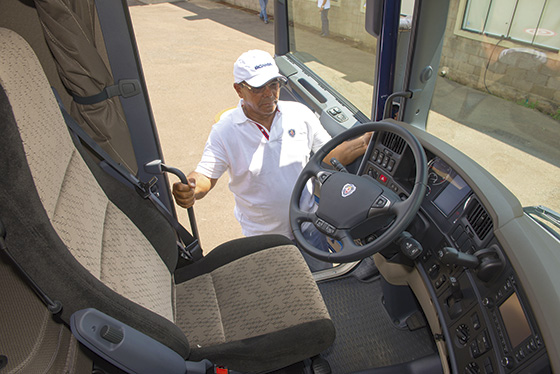Drivers wanted
Just like in other areas, the labor deficit also affects the road freight, forcing operators, class entities and manufacturers to look for solutions to solve the problem

In Brazil, the long distance load freight lives a silent crisis as far as the renewal of drivers who are available in the segment. The difficulty is so latent that the country is importing professionals from other Latin-American countries.
In fact, together with the persistent precariousness of the roads infrastructure in the country, presently this is maybe one of the largest industry bottlenecks. In this concerning scenario, the transport companies, unions and manufacturers are joining their efforts in order to make the profession more attractive for young professionals, in order to renew this very important job for logistics and the very productive chain in the country, largely based on the roads transportation for the flow of goods. After all, the segment moves nothing less than 65% of everything that is transported in the country.
“Everything is transported by trucks, from the field to the consumer’s table, from the raw-material to the industry, including improvement, distribution centers. Sales points, discard and recycling”, says Rodrigo Machado, coordinator of a competition called The Best Truck Driver in Brazil.
By the way, in the trucks industry, this has resulted in the development of new concepts of products and labor relations, which can improve the drivers’ conditions of life, including the ergonomics improvement, better payment and technical qualification dissemination. More than that, if the picture becomes an irreversible one, there will be the possibility that this professional will become obsolete in long term. But as autonomous trucks – for the moment – exist only in scientific fiction, we have to look for more effective and short term solutions.
DISCREPANCY
According to data of NTC&Logística (Associação Nacional do Transporte de Carga e Logística), the present discrepancy of professionals who operate trucks corresponds to 10% of the national fleet, which is calculated in more than 1.6 million vehicles.
A study done by Confederação Nacional do Transporte (CNT) shows that more than 71.5% of businesspersons in the roads transportation segment have difficulty is hiring qualified labor. Furthermore, 19.4% of the interviewed executives point out the lack of experience and 17.9% mention the high labor cost as barriers to hire new drivers.
With that, the projections are that the country will have a deficit of 130 thousand to 160 thousand professionals. “And it is not easy to replace the present professionals” says José Alberto Panzan, president of Sindicamp (Sindicato das Empresas Transportadoras de Cargas de Campinas e Região), an entity that was founded in 1983 which represents 31 cities. “The fact is that we began importing truck drivers from Colombia and other countries, and about 150 professionals are already working in Paraná, for example.”
To begin with, it is necessary to take into consideration that one of the aspects that cause such a situation is the difficulty that the truck driver profession imposes to candidates, marked by loneliness, roads precariousness, low salaries and, mainly, risk of accidents.
“In fact, to hire a truck driver nowadays is difficult, because this is a very dangerous job and the professional must be well prepared”, says Jean Marcelo Moreira da Silva, master drivers instructor of Martin Brower and professional truck driver for almost 20 years. “The technology is very advanced, but if you are not prepared, the consequences are always very serious. I say this because you can’t replace the people’s life.”
QUALIFICATION
This is one of the reasons why the agents of this segment try to solve the problem by investing on the candidates’ qualification. This is gradually changing the driver’s profile, in an attempt to attract new professionals for the job. “To be a truck driver is not what it was formerly, with a professional with his shirt unbuttoned on his chest, with an old slipper and long beard”, points out Panzan. “Today this has changed. The driver must be qualified and well treated to transmit a good image, as he is the company’s visiting card.
The fact is that, as the main asset of the segment, the qualified driver is disputed in the market, which feels the lack of good professionals and, therefore, the companies are creating their own qualifying programs and – many times – the candidate has to spend up to seven months driving with a partner at his side and, later on, he is submitted to an evaluation.
After all, it is not enough to drive a truck. There are many other things. For the companies, this is a purely economic situation, which involves three items: vehicle, driver and services. “A properly specified product, with updated maintenance and well driven also contributes to reduce the components wear, saves fuel and reduces the environmental impact, with a lower emissions level”, points out Eronildo Santos, vehicles sales director of Scania in Brazil.

Av. Francisco Matarazzo, 404 Cj. 701/703 Água Branca - CEP 05001-000 São Paulo/SP
Telefone (11) 3662-4159
© Sobratema. A reprodução do conteúdo total ou parcial é autorizada, desde que citada a fonte. Política de privacidade














